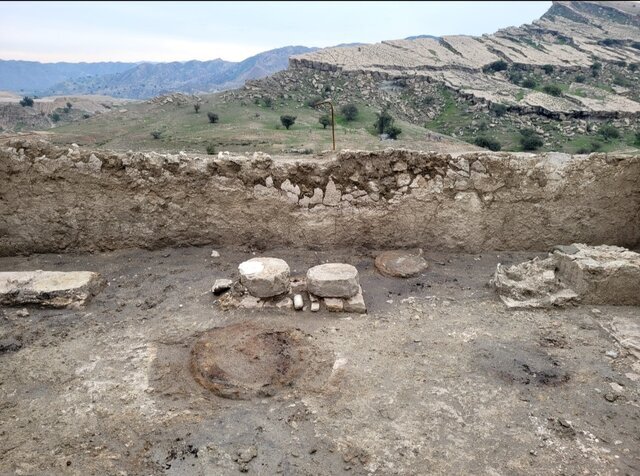INSUBCONTINENT EXCLUSIVE:
of the newly constructed Chamshir Dam in southwest Iran are two copper coins, Iranian archaeologist has said.The coins, which belong to the
Dam, ISNA quoted Ali Hojabri as saying on Tuesday.Abish Khatun was the 9th and last ruler of the Salghurids of Shiraz from 1264 to 1282
She was declared the Atabeg of Fars on orders from Hulegu, a Mongol ruler (c
1217-1265), who founded the Ilkhanid dynasty in Iran.For weeks, archaeologists have warned against the planned inauguration of the dam
because it may flood ruins and relics from the Elamite, Achaemenid, and early Islamic eras.Earlier this month, archaeologist Mohammad-Taqi
Atai said that 143 ancient spots, estimated to date from prehistoric times to the present era, have been identified during the
investigations carried out in the reservoir area of the dam.The area includes works and settlements from prehistoric times to modern times,
and among them, there are the remains of important settlements from the Elamite, Achaemenid, post-Achaemenid, Sassanid, and a significant
number of works related to the Islamic period, the archaeologist explained.Ataei recommended administration officials avoided haste in the
inauguration of the dam as a possible threat to ancient antiquities.Chamshir Dam and hydroelectric power plant are being built 25 km
southeast of Dogonbadan City on the Zohreh River of Kohgilouyeh-Boyerahmad province.Last month, another archaeologist, Saeid Amir-Hajilu,
gave notice that a large area of a Sassanid-Islamic site would be completely submerged as a result of the water release behind the dam
There is a high potential for answering ambiguous archeological questions of Iran about nomads from different periods in the area
surrounding Chamshir Dam, he said.As mentioned by Amir-Hajilu, stone architectural structures, pieces of pottery, and glasswork have been
identified and documented so far
It seems that the site was a seasonal winter settlement or a resort in the Sassanid period, based on the quality of the architectural
structures and the surrounding landscape, he added.About 70 percent of the archaeological site has been plowed and leveled by farmers,
resulting in demolishing many relics buried in this area, he said
Sistan-Baluchestan, Tepe Sialk in Kashan, Susa, and Tchogha Zanbil in the Khuzestan province, and Ecbatana in Hamedan which predate the
Achaemenid period.From a wider point of view, Iranian history can be divided into Pre-Islamic and Islamic eras
The Medes unified Iran as a nation and empire in 625 BC

